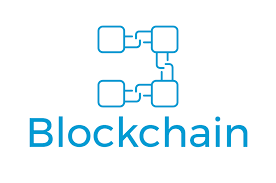
Table of Contents
Hard Fork in Blockchain
What is Hard Fork in Blockchain?
Basically, hard fork definition refers to the Blockchain technology that turns the valid transactions into invalid transactions and vice versa. Each Blockchain user is supposed to upgrade their account to the current protocol.

This is because the hard fork happens when the nodes of the latest version of the cryptocurrency technology no longer support the outdated version. With hard fork launching on the crypto platform, it becomes mandatory for each user to upgrade their software.
Hard Fork
Simply put, when the developer introduces a new code or some new rule to the Blockchain, the fork is created. Now, the technology breaks down into two paths – the first one follows the outdated version and the second will follow the upgraded protocol. Users will still be able to use the outdated version, but only for a short period of time. Sooner or later, they will discover that the software is outdated and they need to upgrade their cryptocurrency account to continue their transactions.
Note that fork isn’t confined to Bitcoin or Ethereum. In fact, the hard fork can happen in just about any type of cryptocurrency platform. You must have heard of the several variants of cryptocurrencies. For example, Bitcoin is the primary form of crypto coin. However, many variants of this crypto coin were launched later. The names include Bitcoin Cash, Bitcoin Gold, and so on. So, this was only possible with the hard fork. The developers added new features to the Bitcoin and released another variant by changing the protocol.
Talk to our investment specialist
Why Hard Fork is Created?
There can be many reasons why the developers decide to introduce a hard fork in the Blockchain. The most common purpose is to upgrade the security features. When the outdated version doesn’t seem secure or the customers experience security breaches, then a hard fork can be implemented to update the security of the software. Similarly, developers can use a hard fork to introduce new functions to the software.
The best example of the hard fork is Ethereum Blockchain releasing a hard fork in order to reverse the DAO hack. When this hack was reported to the developers, the investors and the whole community wanted to reverse all the Ethereum transactions. Basically, the software was hacked by an anonymous hacker. It resulted in the loss of more than ten million dollars. The developers launched the hard fork, which reversed all the Ethereum transactions after the hack. The users got their money back.
So, this clarifies that hard fork is implemented to cater to the community’s security-upgrade demands. The new functionalities and features are added to the Blockchain platform with the help of a hard fork.
How Does it Work?
The hard fork doesn’t remove the outdated version of the software immediately. The older version works and remains on the server for a while. However, a soft fork removes the outdated version. This happens when the users have upgraded the software to the newest version and the previous one no longer exists.
All efforts have been made to ensure the information provided here is accurate. However, no guarantees are made regarding correctness of data. Please verify with scheme information document before making any investment.












